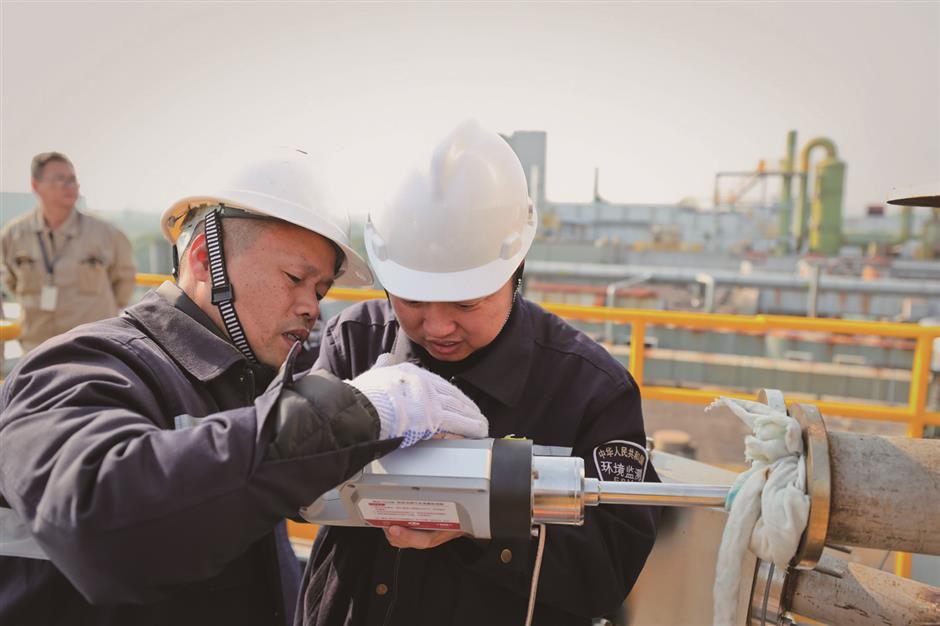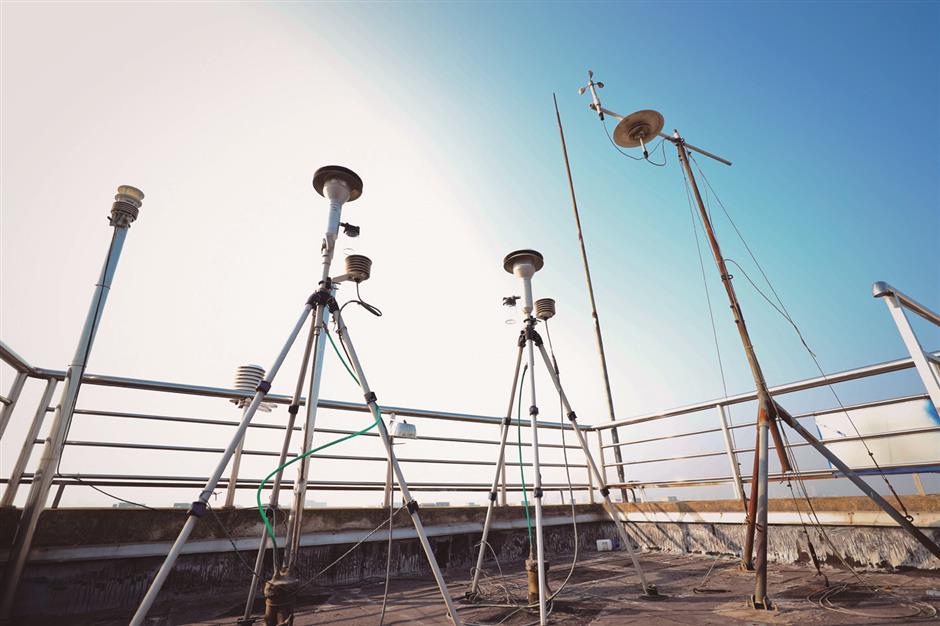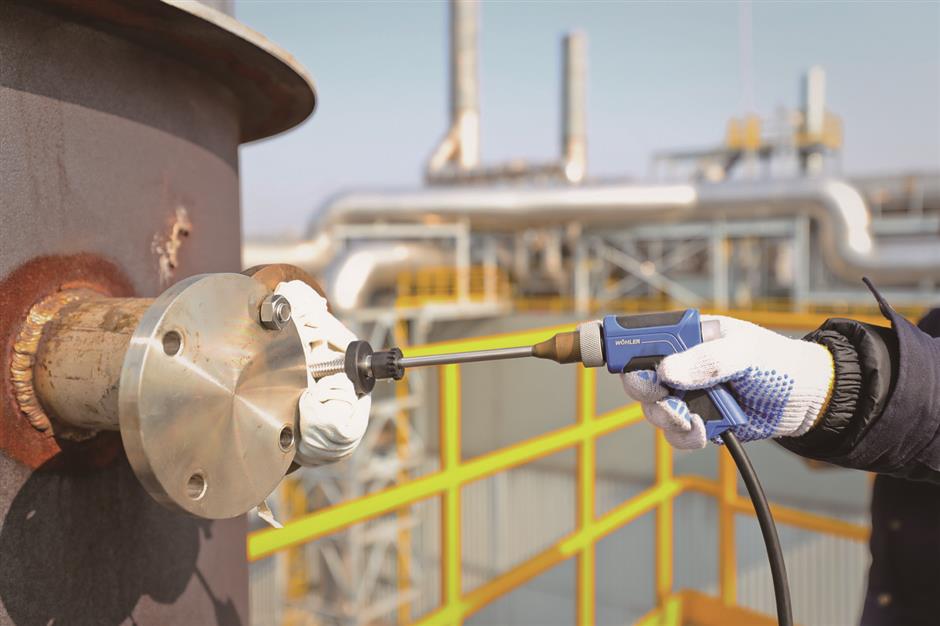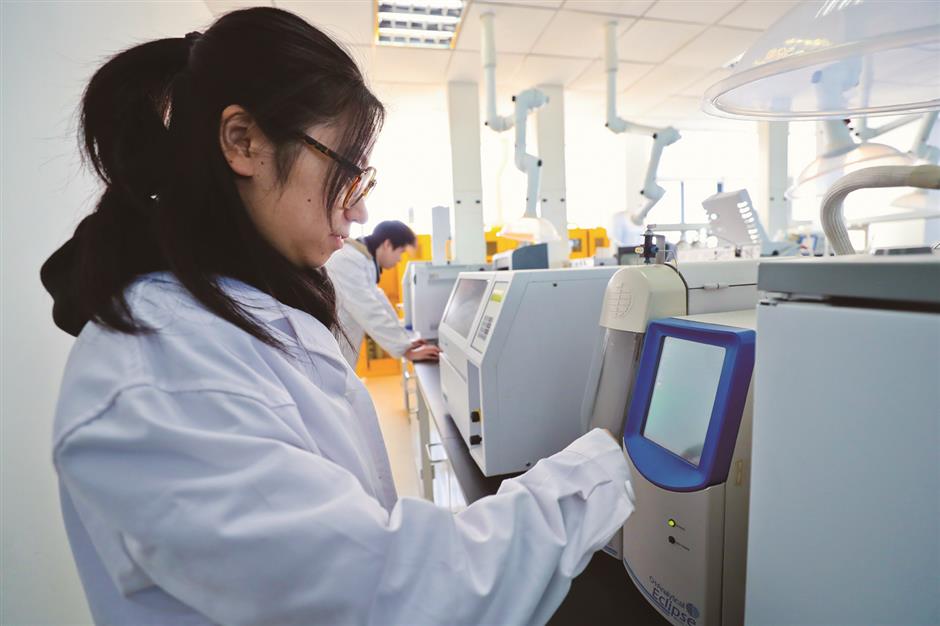Center's machines on 24-hour duty to keep air quality at its best

Staff members from Songjiang Environmental Monitoring Center carry out waste gas monitoring at 3M’s Xinqiao factory.

Environment monitoring equipment

Staff members from Songjiang Environmental Monitoring Center carry out waste gas monitoring at 3M’s Xinqiao factory.

Staff members from Songjiang Environmental Monitoring Center carry out waste gas monitoring at 3M’s Xinqiao factory.

Environment monitoring experts carry out researches.

Environment monitoring experts carry out researches.
Daybreak has not yet arrived. While most people are still fast asleep, several mushroom-shaped machines are running nonstop on the rooftop of Songjiang Environmental Monitoring Center. They are 24-hour air quality auto-monitoring stations.
An air quality auto-monitoring station has to be erected outdoors and rooftop is one of the best locations. The station can monitor air quality indexes including PM10, PM2.5, nitrogen dioxide, sulfur dioxide, carbon monoxide and ozone.
Research has show that an increase of coarse particle pollutants by every 10 micrograms per cubic meter will raise the rate of respiratory disease emergency cases by 1 percent.
Since 2013, five air quality auto-monitoring stations have been set up in Songjiang’s Zhongshan and Yueyang road communities, Maogang Town, the district’s library and the Caohejing High-Tech Park. The stations operate around the clock to capture changes in gaseous pollutants and respirable particulates in the atmosphere.
The monitoring results are simultaneously transferred to district- and city-level environmental protection bureaus’ data management systems, staff at the Songjiang Environmental Monitoring Center said.
The district’s ecological environment bureau took the initiative to publish its hourly urban air quality information to residents. The monitoring data showed that the district’s rate of excellent and good environmental and air quality days from January to November 2019 was 81.6 percent, the highest since Songjiang began recording monitoring statistics.
Though having achieved satisfactory environmental results, the district will maintain its anti-pollution campaign with the aim of reducing the average yearly density of PM2.5 to 37 micrograms per cubic meter or below in 2020.
















